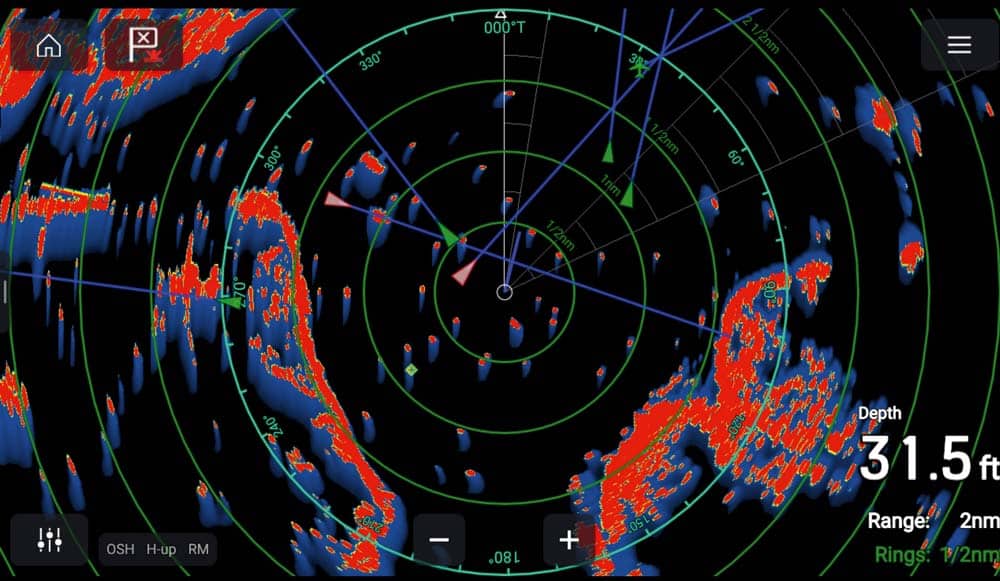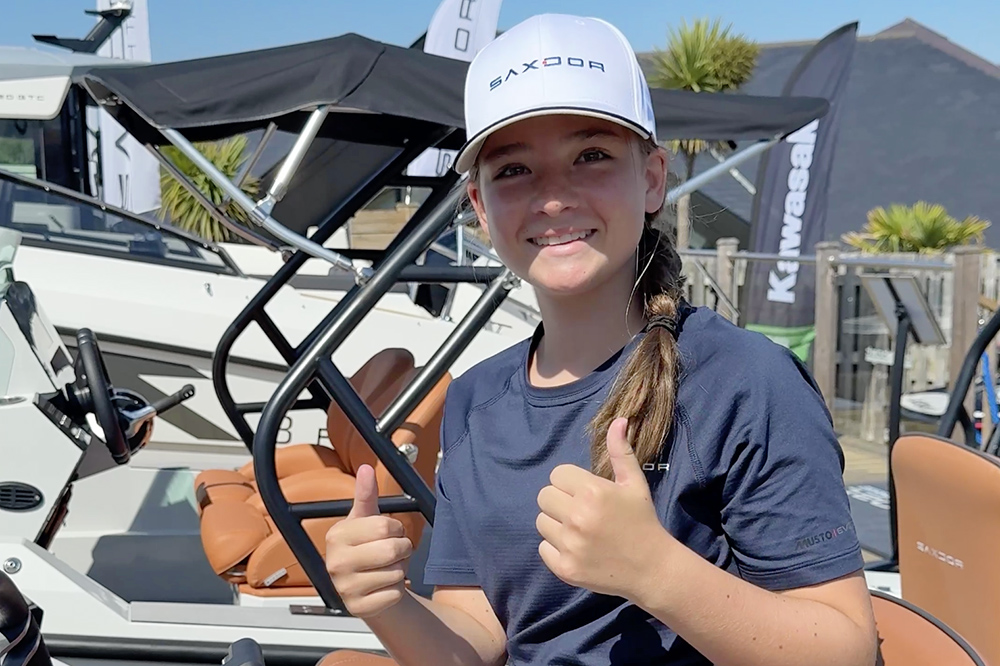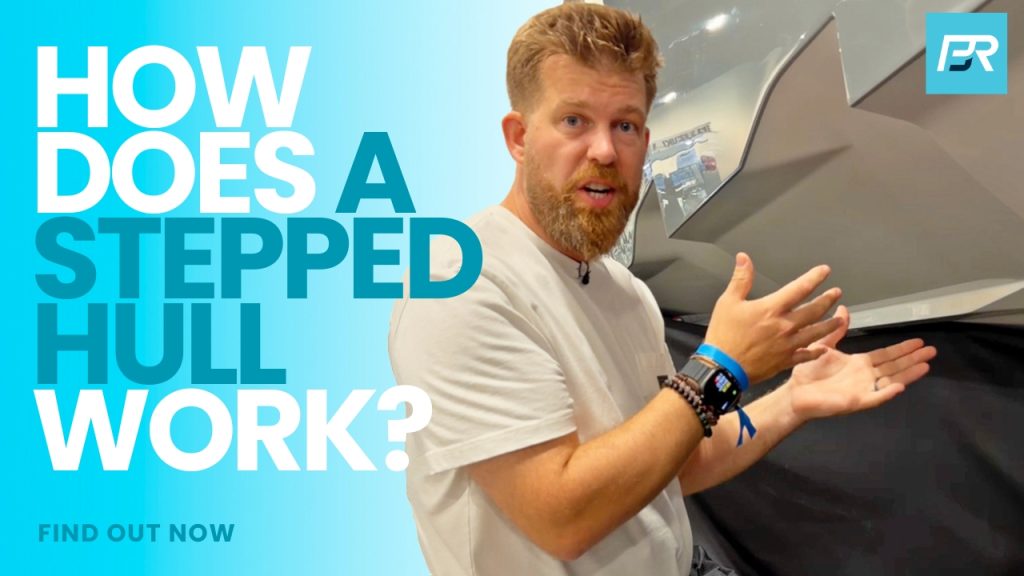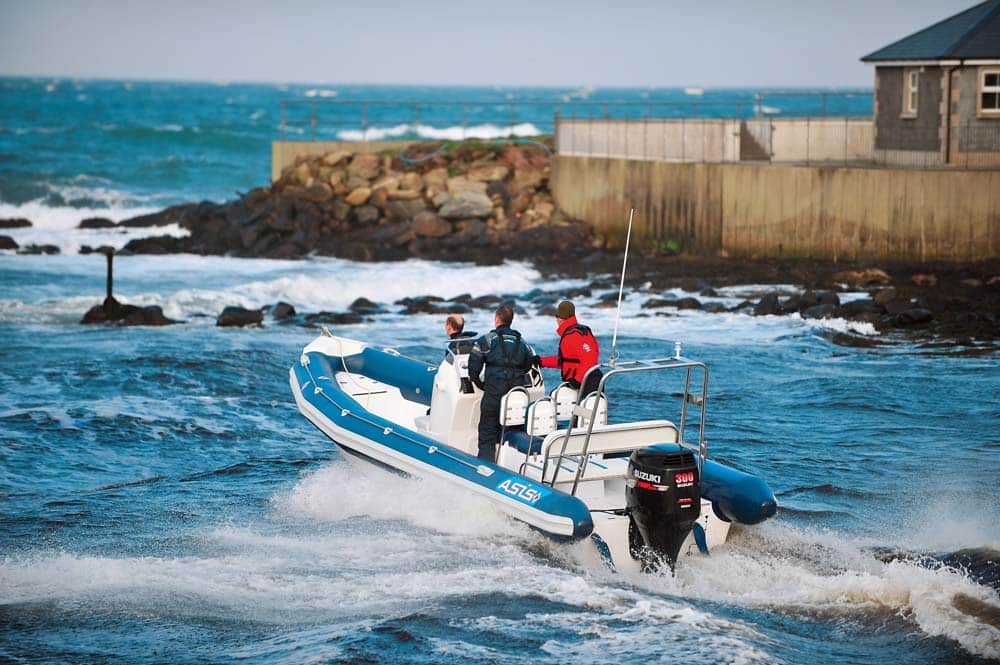How to attach your kill cord correctly
Learn how to attach your kill cord correctly to protect all those on board. Courtesy of Idealboat.com
As skippers, we’ve all got a clear responsibility to keep a ‘proper lookout’ by all available means. Pretty obviously, this refers to the eyes and ears of the skipper and crew, but the rules also reference the use of radar. Wander around any marina and you’ll see lots of boats with radar antennas sitting proudly atop their coachroofs, on their radar arches or bolted to the T-tops. The number of these has increased dramatically over the last few years, but I’d wager a fair bit that beyond most skippers having an occasional look at the the radar screen, they rarely get used in anger, and very few people appreciate the pros and cons of the unit and how to use it to best effect. I also hear many people say that they either haven’t fitted radar as they have AIS or they would use AIS in preference to radar if they needed to in less good conditions.
There is no doubt that radar and AIS can be great additions to our boats; however, to make the most of these bits of kit, we need to fully understand what they do, what their limitations and strengths are, and what we need to do as skippers to make the most of them. This is the first in a series of articles that will look at some of the more technological elements of our job as skippers, culminating in a major PBR review of the quality and accuracy of the chartplotter-based chart systems and apps available to us.
Let’s start with radar. We’ve all seen films where an aircraft or a ship spots targets on its radar. Basically what we’re seeing is the result of the radar’s antenna sending a signal out that hits something and bounces back to be received by the antenna. The radar knows when it sent the signal and what direction the antenna was pointing in when sent, so it drops a target on its screen in that position. What you may see is a slightly elongated blob when you know it’s a round, smallish channel buoy. The reason why radar may stretch a target is that it is great at measuring distance but less good at bearings – hence the stretch. This is not a huge issue as long as you are aware of it.


It used to be really hard work trying to figure out whether the objects we are seeing on our screen are moving targets or static buoys. But nowadays it’s really easy, and all units have the ability for us to set zones where we want the unit to capture a target, calculate what it’s doing and then tell us whether it’s a threat to us.
We can add arrows to our own vessel and targets called ‘vectors’, which project forward our position in a few minutes’ time, and that of the target. This can be a great way of seeing whether, and if so how, we may interact with these other vessels. With the newer radar antennas we can use a system called ‘Doppler’, which means targets are presented in different colours (red/green typically) to show whether they are a threat or not.
Often overlooked with radar is its real value in terms of navigation. If we are transiting along a coast we can use the radar to help us stay a set distance offshore, and we can overlay the radar returns over a chart to determine whether we have any chart or boat data errors that could inhibit safe navigation. Basically the radar works really well as a supplement to our chartplotter.
One of the reasons we see so many radar antennas on boats nowadays is that they are pretty cheap to add to an existing set-up. The multifunction displays (‘MFDs’) we see from Raymarine, Garmin, Simrad, etc. all allow a radar to just be ‘plugged in and go’, with the only decision you need to make being whether you use Wi-Fi to connect between the antenna and the unit or a cable. The cable option is more robust but needs a bit more installation. The cheapest antennas are priced at less than £2,000 and do a great job, with more expensive options costing in the thousands.
So what about AIS? AIS stands for ‘Automatic Identification System’ and is essentially a system with two options: we can either use it to ‘see’ other boats that are transmitting their details (we call this an ‘AIS receiver’) or we can utilise it to both transmit and receive data (known as an ‘AIS transponder’ or ‘transmitter’). It’s important to make this distinction as when people say they have an AIS unit installed, they more often than not just have the receiver fitted, so they are not broadcasting their own position. An AIS receiver unit can come in a few different forms. You can fit a small ‘black box’ that will be hidden and link to your chartplotter, where you switch on ‘AIS targets’ on the chartplotter and these will appear as small triangles on the screen. You can also get VHF radios (e.g. the Icom M510) that do the same and can be linked to the plotter. Whichever you choose, you’ll either need an extra VHF antenna or a splitter box to share your existing one. Generally, I’d go for the extra antenna as it gives you a spare one if needed. If you choose the transponder option, again it’s a black box item and will be set up to feed the plotter. It will need programming with your boat details too.
So what are the pros and cons of AIS? Well, it’s really good for giving you extra ‘situational awareness’. In contrast to radar, it can ‘see’ round a headland or out of a harbour entrance to alert you to vessels approaching. The plotter can be configured to show ‘target vectors’, which will appear as a line projecting forward of the vessel. This is calculated from its speed and course – so if, say, you set the vector length to six minutes, it will show you where the vessel will be in six minutes’ time as it progresses (assuming it maintains course and speed). It’s certainly great having AIS, but there are some limitations to factor in to how you interpret what you are seeing.
If you set up your radar display and track some vessels, switch on the AIS targets and what you’ll see is the AIS target for a vessel (assuming that it chooses to transmit AIS) sitting on top of the radar target, then dropping back as the radar target moves forward. The AIS jumps forward again then to match the radar target. This occurs because leisure AIS only transmits every 30 seconds or so. The radar target is really where the vessel is and the AIS transmission is lagging. At slow speeds the difference may be negligible, but at higher speeds the vessel you are looking at could be a fair bit forward of where it appears to be. Commercial vessels use an enhanced system and their transmissions are more regular and are linked to vessel speed – the faster the vessel, the smaller the time interval.
The other factor that’s often overlooked is that what you are viewing (and presumably relying on being accurate) is actually what the other vessel is choosing to tell you. What I mean by this is that you are seeing what that other vessel’s AIS unit is being told are its course and speed. There is the chance that there are errors in the set-up of the other vessel’s systems and their real course, speed, vessel size, identity, etc. are different. In some areas of the world, jamming, spoofing and hacking can be an issue too. Boats can, and do, switch off their AIS as well.
Don’t forget that there are some good apps that can act as an AIS receiver – Marine Traffic being the most popular. Bear in mind that the accuracy of what you see may be further compromised by the extra delays in the receiving antennas transmitting their signals to the Internet and then to your app.
So is it radar or AIS? In reality, if you have radar you’ll probably have an AIS receiver too; however, many people will either just have an AIS receiver or use an app. Ask any skipper with experience of radar and they will swear by its accuracy and benefits. Radar sees what is there and doesn’t – indeed cannot – lie. AIS might. Both have their strengths and limitations, with the key being really knowing how to use them and understanding the virtues of each.
You’d be surprised if I didn’t get a plug in here for some training courses. With radar, this is really essential, as what you see on the screen isn’t intuitive, and how you need to react to these targets will vary according to whether or not you are operating in what’s termed ‘restricted visibility’ when all you have learnt about head-on, crossing and overtaking situations is out the window and new rules apply.
The RYA have a one-day radar course, and there are also some enhanced two-day courses that use simulators to give you some really good practice with radar. Given that the Collision Regulations state that if you have radar you must use it (when relevant), the truth is that if you do have it, you really should do a course to get to grips with your system.
Whatever you choose to do, get the system fired up and have a play with all the settings. And make sure you get used to it in good conditions rather than waiting for a time of restricted visibility.
Have fun afloat!
Any Illustrations in this article are by Pete Galvin and are taken from the RYA Powerboat Handbook/RYA Advanced Powerboat Handbook, available in print or e-book from the RYA shop: rya.org.uk/shop.
Are you looking for more boating tuition? We have a great tuition section, take a look!


Learn how to attach your kill cord correctly to protect all those on board. Courtesy of Idealboat.com


Monty explains how a stepped hull works in this informative video.


The Bayliner C21 is a compact yet versatile overnight cruiser designed for comfort and adventure. With a well-equipped cabin, spacious…


That is the question. Paul Glatzel considers a classic problem all boaters face, the boating weather … One of the…